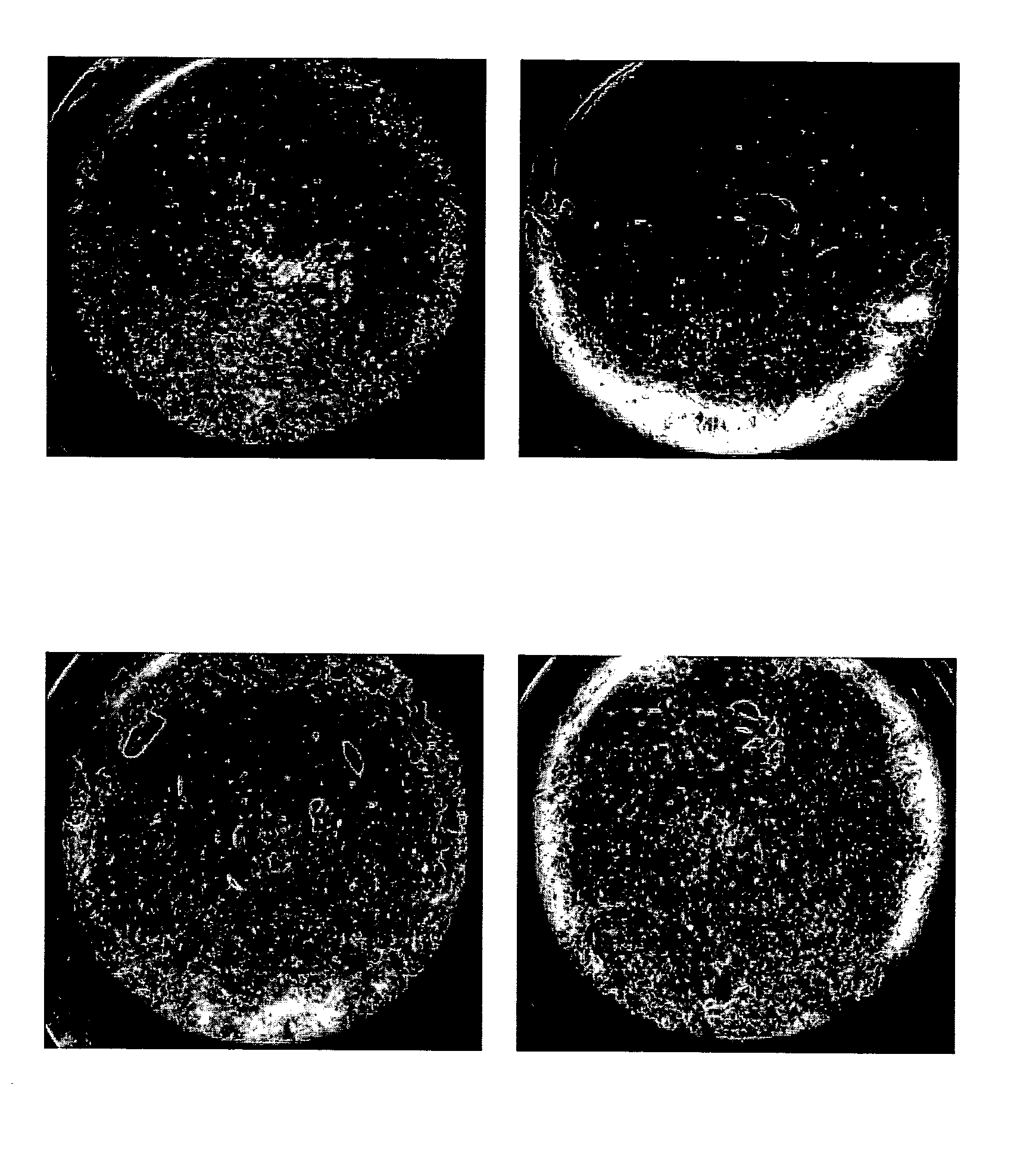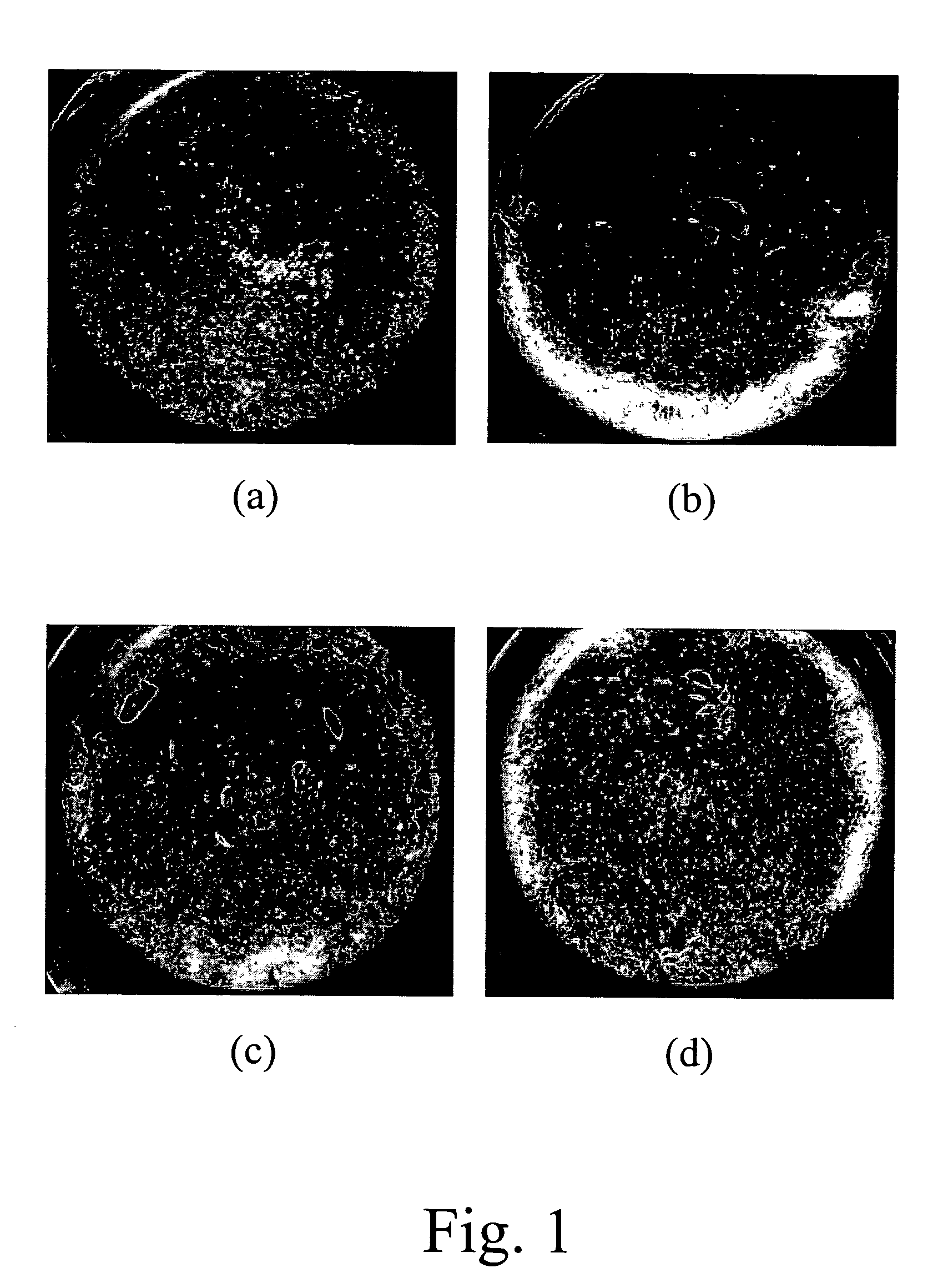Methods for culturing human embryonic stem cells
a human embryonic stem cell and hes cell technology, applied in the field of culturing human embryonic stem cells, can solve the problems of hes cell inability to enzymatically disperse into single cells without causing undesirable death or differentiation, scaling up and downstream manipulation and experimentation of hes cells, and significant obstacles to the practical exploitation of hes cells
- Summary
- Abstract
- Description
- Claims
- Application Information
AI Technical Summary
Benefits of technology
Problems solved by technology
Method used
Image
Examples
example 1
Growth of Single Undifferentiated HES Cells Encompassed with ECM on Feeder Cells
[0055] a) Single Undifferentiated HES Cells Preparation
[0056] The undifferentiated HES cell line identified as HES-3 was used in this example. The undifferentiated HES cells were dissociated into a single-cell suspension by incubating in 200 u / ml collagenase type IV (Gibco) for about 5 minutes at 37° C. The single-cell suspension was centrifuged at 2,000 rpm for 5 minutes, and the supernatant was decanted. The pellet containing single cells was resuspended in an HES medium to form a single-cell suspension.
[0057] b) Extracellular Matrix Preparation
[0058] (i) HES extracellular matrix was extracted from HES cells. The HES cells were removed by extraction with 1 ml 1% Triton X-100 (Sigma) for 30 minutes or 1 ml 0.05 N NaOH (Sigma) for 5 minutes. After removal of the lysed cells, the matrix was incubated in 100 μl HES medium.
[0059] (ii) Matrigel™ derives from the Engelbreth-Holmswarm mouse tumor cells. ...
example 2
HES Cell Transfection
[0077] To assess transfection efficiency of single cells, in comparison with cell colonies, HES cells were transfected with a plasmid encoding an enhanced green fluorescent protein (EGFP) under the transcriptional control of the phosphoglycerate kinase (PGK) promoter.
[0078] (i) Experimental group: Undifferentiated single cells suspended in 50 μl DMEM medium were prepared following the procedure described previously. 1.5 μl of transfection agent (FuGENE 6, Roche) was dissolved in another 50 μl DMEM medium. 0.5 μg of plasmid (EGFP encoded by PGK promoter) was mixed with the single cells suspension and transfection agent solution. The transfection reaction was kept at 37° C. for 1 hour. The transfected single cells were encompassed with HES extracellular matrix before being inoculated onto the Mitomycin C inactivated human foreskin fibroblast feeder cells in the HES medium. The medium was refreshed daily.
[0079] (ii) Control group: Undifferentiated HES cell colo...
PUM
| Property | Measurement | Unit |
|---|---|---|
| mass | aaaaa | aaaaa |
| sizes | aaaaa | aaaaa |
| diameter | aaaaa | aaaaa |
Abstract
Description
Claims
Application Information
 Login to View More
Login to View More - R&D
- Intellectual Property
- Life Sciences
- Materials
- Tech Scout
- Unparalleled Data Quality
- Higher Quality Content
- 60% Fewer Hallucinations
Browse by: Latest US Patents, China's latest patents, Technical Efficacy Thesaurus, Application Domain, Technology Topic, Popular Technical Reports.
© 2025 PatSnap. All rights reserved.Legal|Privacy policy|Modern Slavery Act Transparency Statement|Sitemap|About US| Contact US: help@patsnap.com



